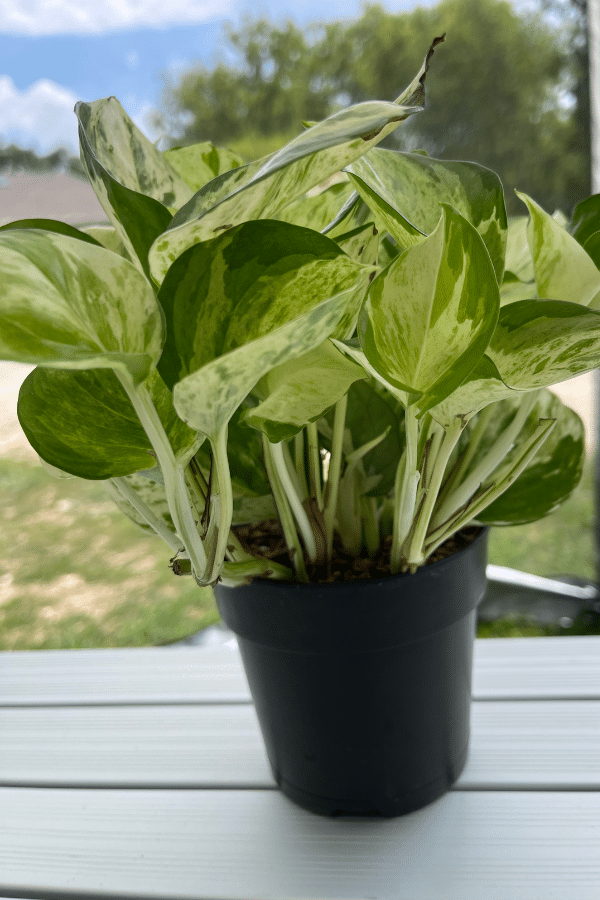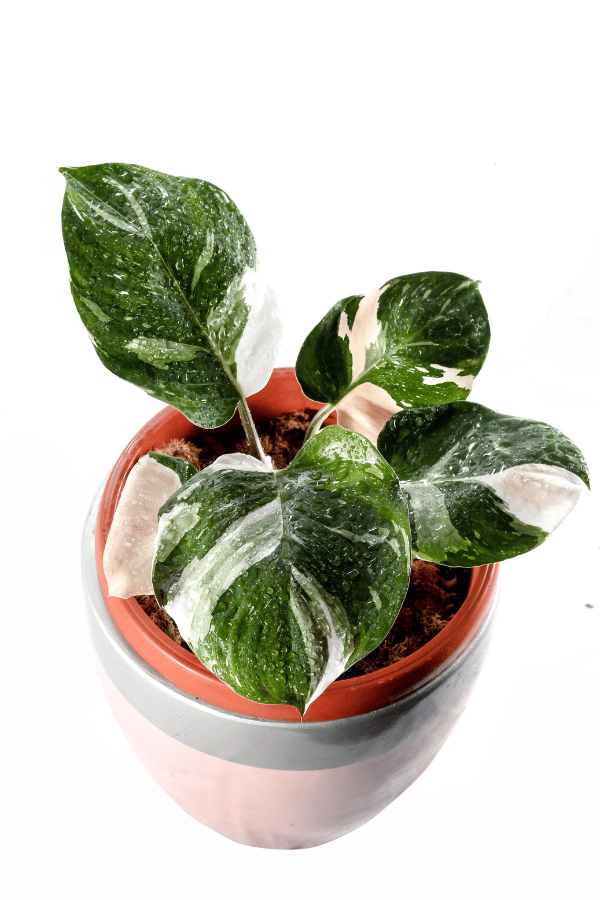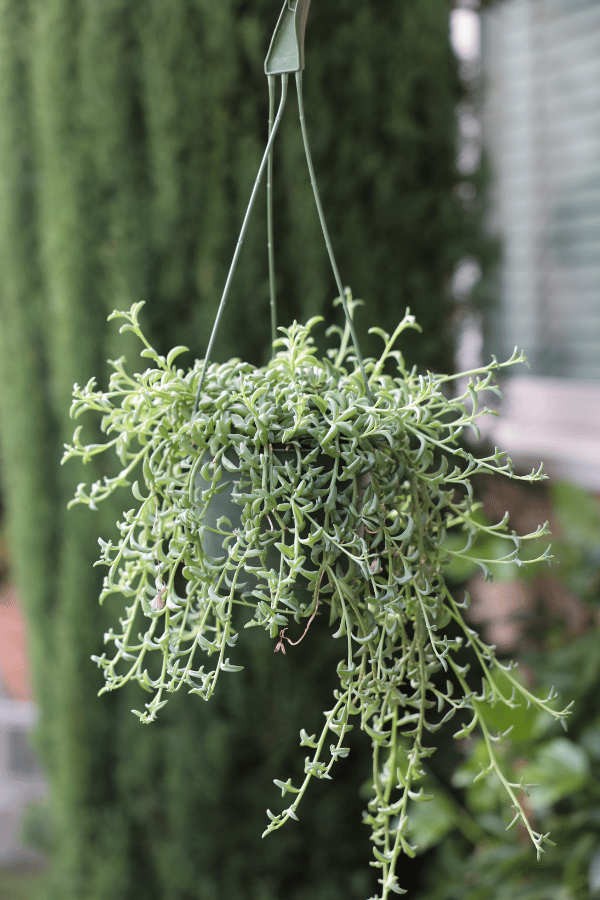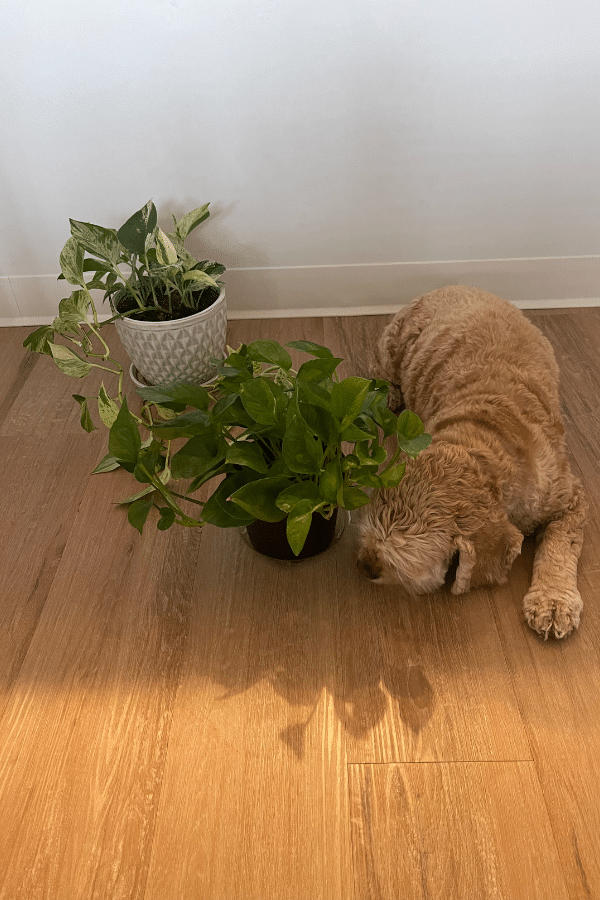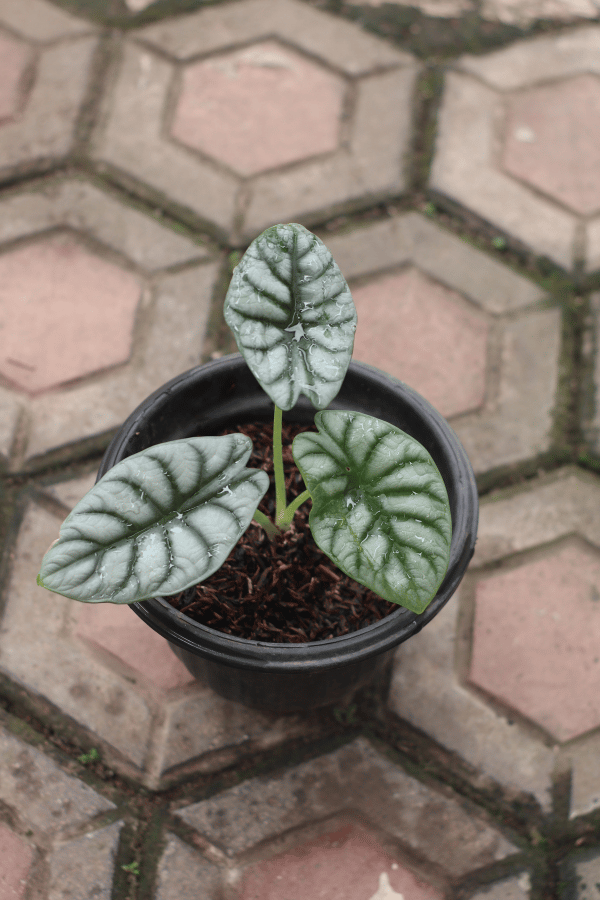Hoya Carnosa Tricolor
Scientific Name: Hoya Carnosa Tricolor
Common Name: Hoya Tricolor, Wax Plant
Hoya Carnosa Tricolor care is an easy plant to grow and care for and it’s perfect for beginners. If you want a houseplant that will trail and place in a hanging basket, a Hoya Carnosa Tricolor plant may be a good plant for you.
To give this Hoya plant the best care, it requires moisture-retentive well-draining soil, allow the soil to dry out before watering, provide the plant with bright indirect sunlight, give it temperatures ranging from 65-80F, and high humidity levels.
Quick Care Overview
| Common Name | Wax Plant, Hoya Tricolor |
| Scientific Name | Hoya Carnosa Tricolor |
| Family | Apocynaceae |
| Origin | Australia, Eastern Asia |
| Growth Rate | Medium |
| Identification | Thick leaves with dark green edges and yellow to pink centers |
| Height | Up to 20 feet in length |
| Soil | Moisture retentive, well-draining soil |
| Water | Allow the top inch of soil to dry out before watering |
| Temperature | 65-80F |
| Sunlight | Bright indirect sunlight |
| Toxic to Cats & Dogs | Yes |
| Toxic to Humans | Yes |
| Pests | Mealybugs, aphids |
| Diseases | Botrytis blight, root rot |
Below we will dive deep into this Hoya Carnosa Tricolor care guide.
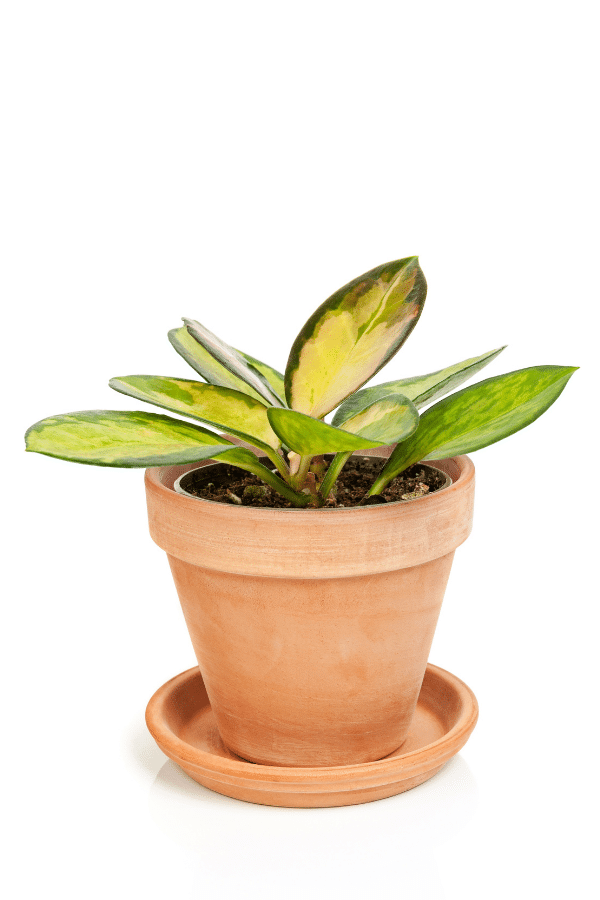
Hoya Carnosa Tricolor History
Hoya Carnosa Tricolor, otherwise sometimes known as Crimson Princess or the Wax Plant, like all other Hoyas, is a vining semi-succulent with thick leaves that have pink and white variegated colors. This plant is incredibly gorgeous when it produces fragrant, lovely star-shaped flowers. Hoya Carnosa Tricolor has become a favorite amongst plant lovers.
Hoya Carnosa Tricolor Identification
This lovely Hoya has thick, waxy foliage that has dark-green borders and creamy pink or yellow centers. Young leaves are often bright red. Leaves will become 2-3 inches in length and grow on pink stems. The color of this plant’s foliage will depend on its growing environment.
Hoya Carnosa Tricolor Growth Facts
This vining plant looks lovely as a trailing plant in a hanging basket and is a moderate to slow grower.
How Big Does a Hoya Carnosa Tricolor Get?
Hoya Carnosa may grow up to 20 feet long, if not maintained and pruned back.
Hoya Carnosa Tricolor Care
This Hoya is perfect for beginners. Just ensure that you provide it with a bright spot and do not overwater.
Hoya Carnosa Tricolor Soil
Hoya Carnosa Tricolor requires moisture-retentive, well-draining soil. A quality commercial potting mix will work perfectly. However, you may amend the potting soil with coco coir and compost to improve moisture retention and nutrients.
Hoya Carnosa Tricolor Fertilizer
Your Hoya will enjoy receiving a feeding every two weeks during the warm growing season from a well-balanced liquid fertilizer. Ensure that you follow all label instructions and do not overfeed. Your Hoya should not be fertilized in winter.
Hoya Carnosa Tricolor Watering
Depending on growing conditions, you should water your Hoya every week during the warm growing season and reduce watering frequency in the fall and winter. You should allow the top inch of your soil to dry before rewatering. If the foliage of your Hoya starts to yellow, it is oven an indicator that you are overwatering. Hoya Carnosa Tricolor is very sensitive to overwatering.
Hoya Carnosa Tricolor Light Requirements
Hoya Tricolor should be grown in bright indirect light and will tolerate full morning sun. Intense direct sunlight can scorch the leaves and cause sun scorching. It is important to note that the lower the light, the slower the growth. If kept in low light, your Hoya will not flower.
Hoya Carnosa Tricolor Temperature & Humidity
Hoya Carnosa Tricolor thrives in warm environments between 65 to 80 degrees Fahrenheit and should never be exposed to temperatures below 50 degrees Fahrenheit as they are not cold-hardy. In addition, although this plant is tolerant of average indoor humidity’s, it will thrive if given higher humidity levels. You may increase humidity in your home by installing a humidifier or pebble tray.
Repotting Hoya Carnosa Tricolor
Your Hoya should be repotted every two to three years or whenever its roots are seen sticking out from its container’s drainage holes. Select a pot that is 1-2 inches larger with drainage holes, repot your plant, refresh the soil, water thoroughly, and place in indirect light.
Hoya Carnosa Tricolor Maintenance & Pruning
To maintain the health of your Hoya, it is important to prune your Hoya annually. You should prune your Hoya in early spring before the growing season begins using a sharp pair of clean shears. Long, stringy tendrils should be cut back to make space for new buds.
Hoya Carnosa Tricolor Propagation
Propagation of Hoya Carnosa is straightforward and may be done through stem cuttings. To propagate your Hoya, first, take cuttings about 3-4 inches long. Next, cut below a set of leaves using sharp, clean shears. Rooting hormone may be used to encourage successful rooting. Next, plant the cuttings into well-draining soil, water your cuttings thoroughly, and keep them in indirect light. You should keep your cuttings moist until your cuttings have been established and new growth is seen.
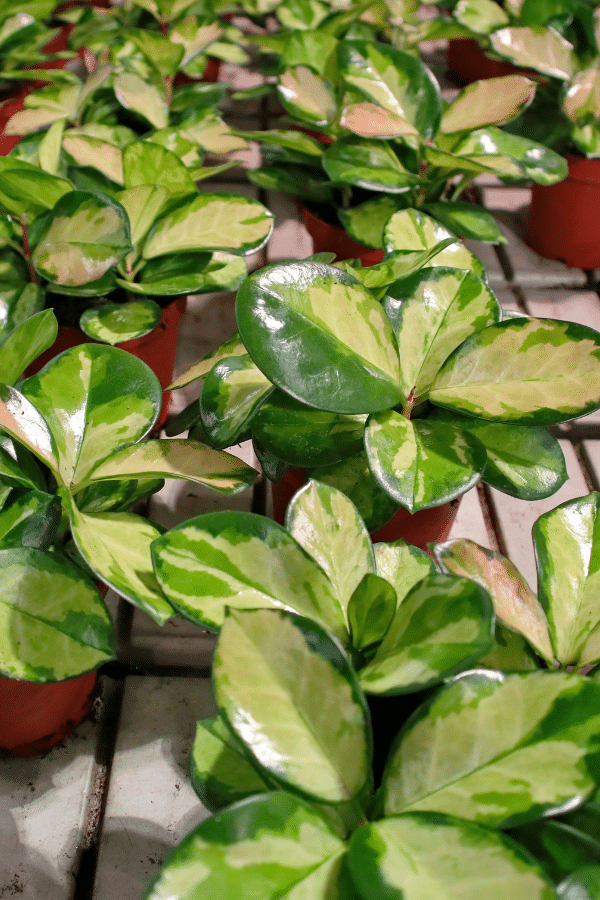
Hoya Carnosa Tricolor Toxicity
Hoya Carnosa Tricolor is toxic to humans, cats, and dogs. Keep curious pets and children away from this plant.
Toxicity to Humans
Hoya Carnosa Tricolor is considered non-toxic to humans and should never be ingested. Additionally, this plant contains a sap that may irritate the skin. Therefore, it is suggested to wear gloves when handling this plant and washing your hands.
Toxicity to Cats & Dogs
This plant is considered toxic to pets and should not be ingested. However, if you suspect that your pet has consumed any portion of this plant, contact your veterinarian or animal poison control immediately.
Hoya Carnosa Tricolor Problems
Hoya Carnosa Tricolor Leaves Turning Yellow
Hoya Carnosa may have yellowing foliage due to various causes. Overwatering, temperature stress, overfertilization, incorrect lighting, pests, or disease may all cause yellowing of the foliage.
Hoya Carnosa Tricolor Leaves Turning Brown
The most common cause of foliage browning is due to plant disease. Ensure that you are not overwatering your plant and that it is not allowed to sit in excess water from within the plant’s drainage tray, as this may lead to fungal or bacterial infection.
Hoya Carnosa Tricolor Diseases
Although this Hoya is hardy, it may fall susceptible to fungal infection if it is not in optimal conditions. Hoya Carnosa Tricolor may become infected by botrytis blight or root rot. Ensure that you do not overwater your plant.
Hoya Carnosa Tricolor Pests
This Hoya may become susceptible to common indoor pests such as aphids, mealybugs, or other sap-sucking pests. Treat with a pesticide such as insecticidal soap or neem oil upon identifying an infestation.

